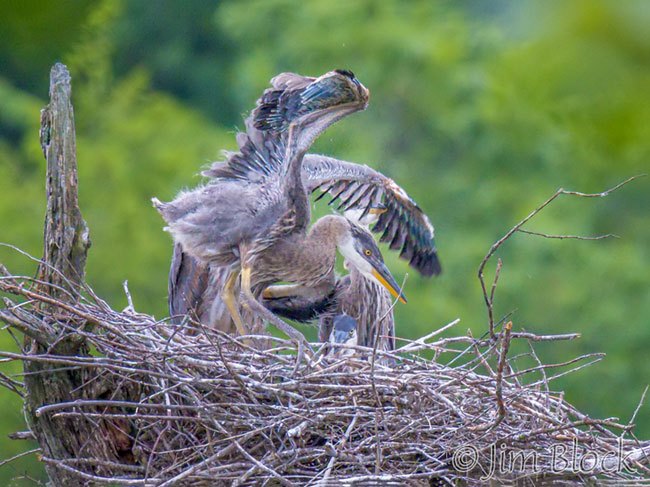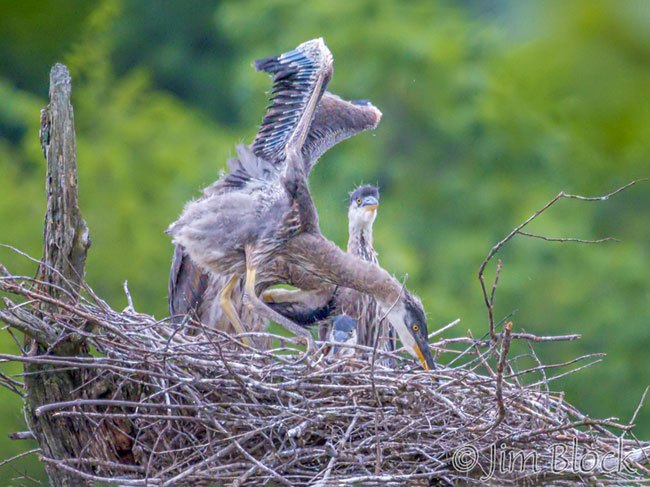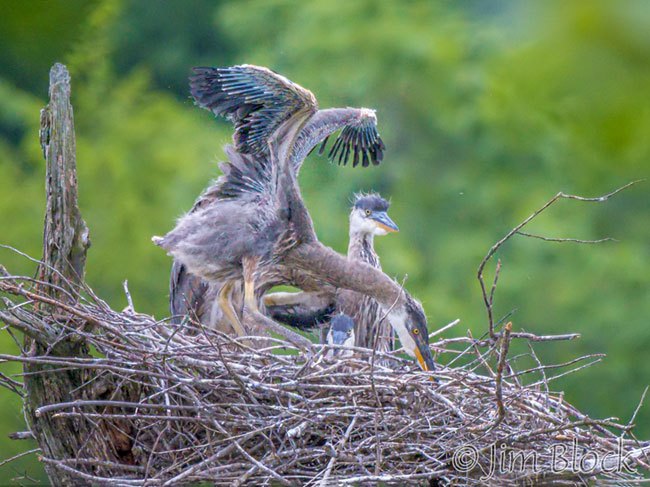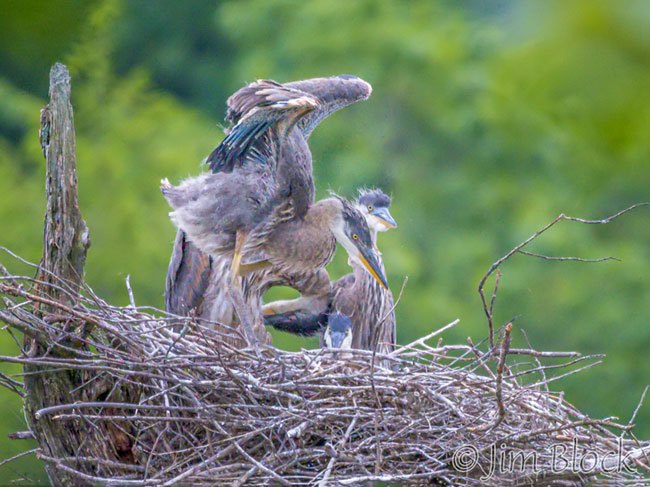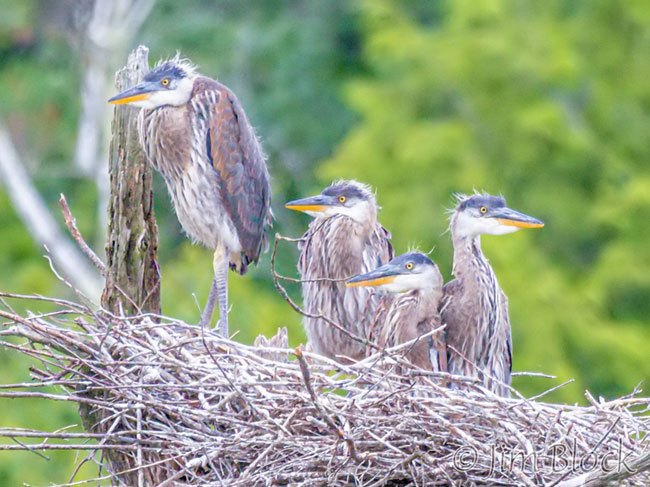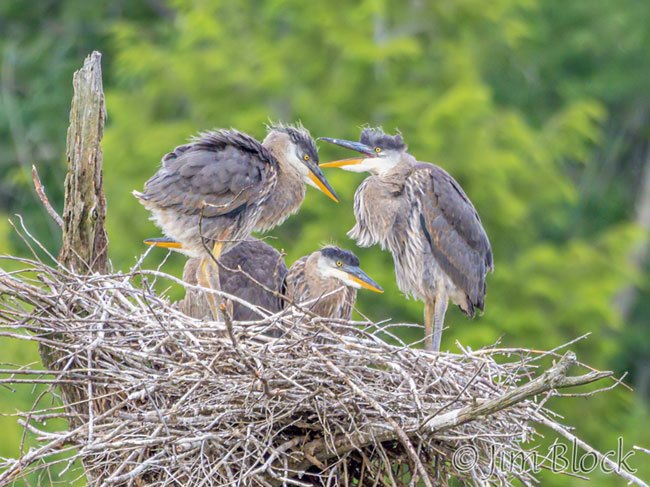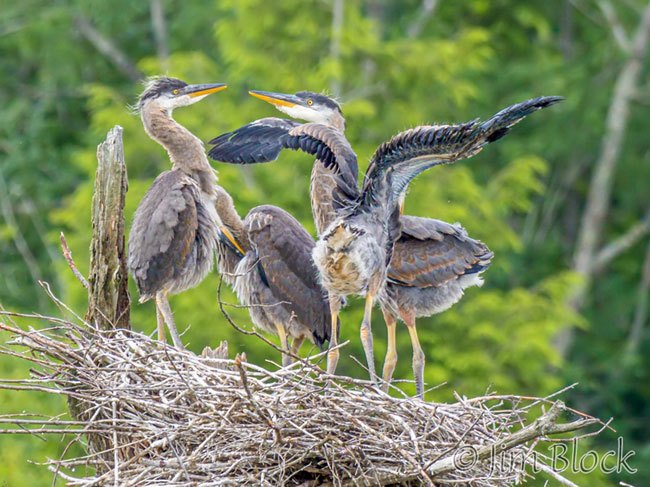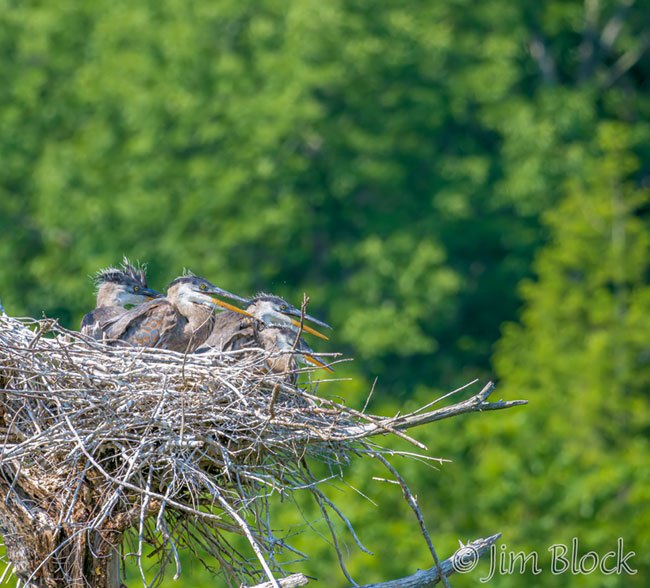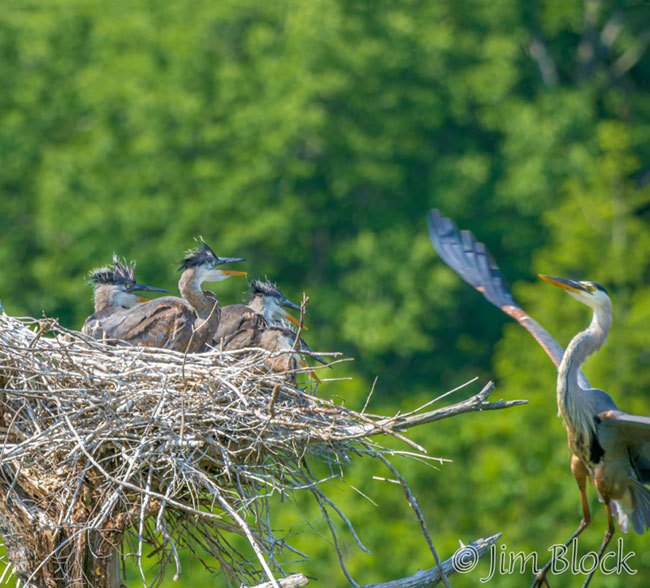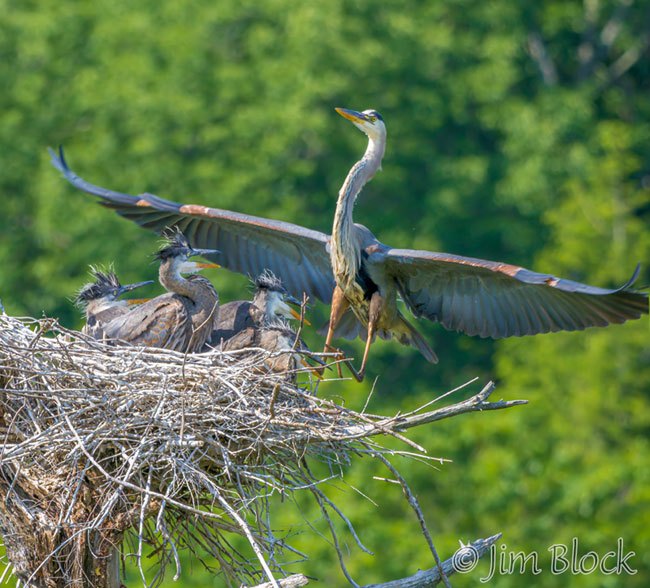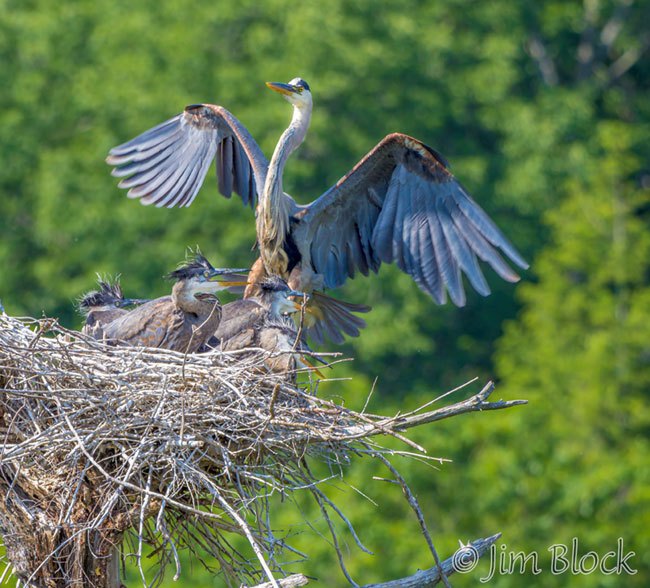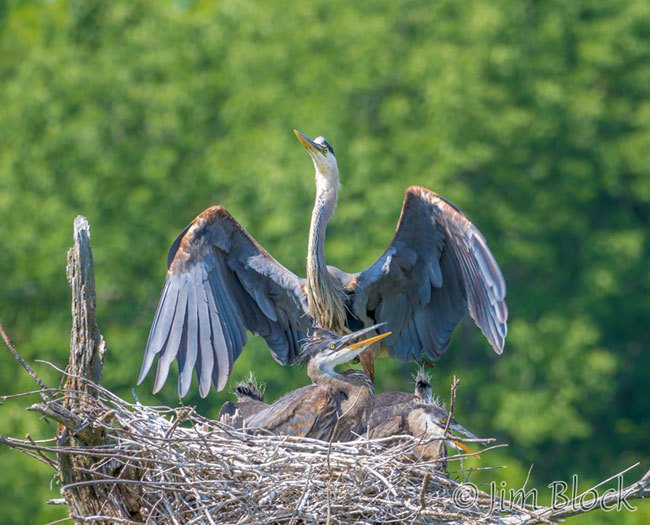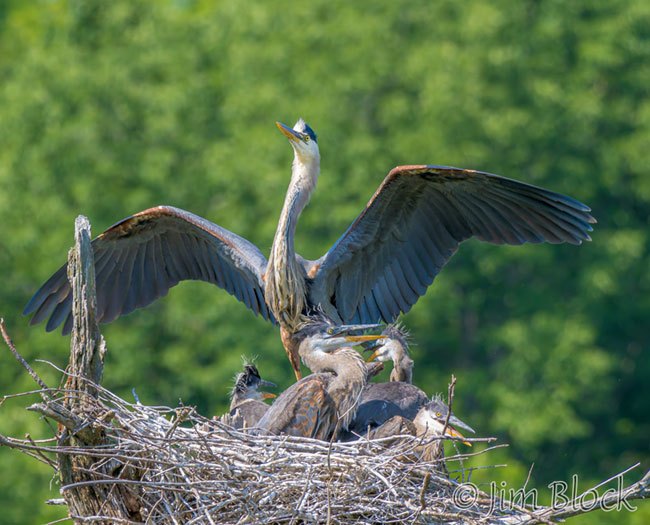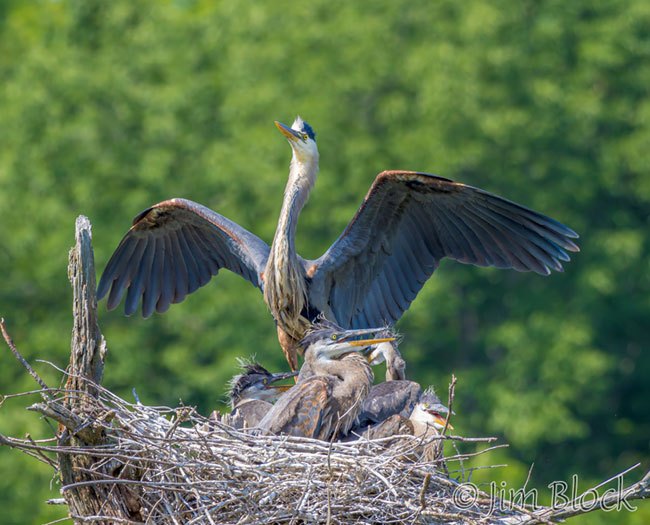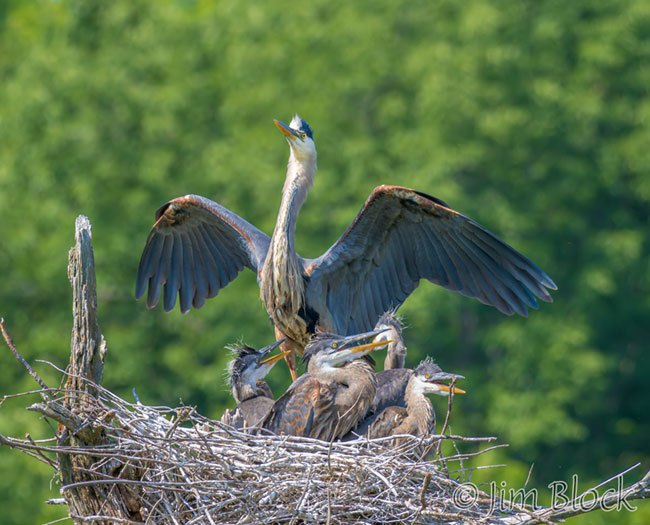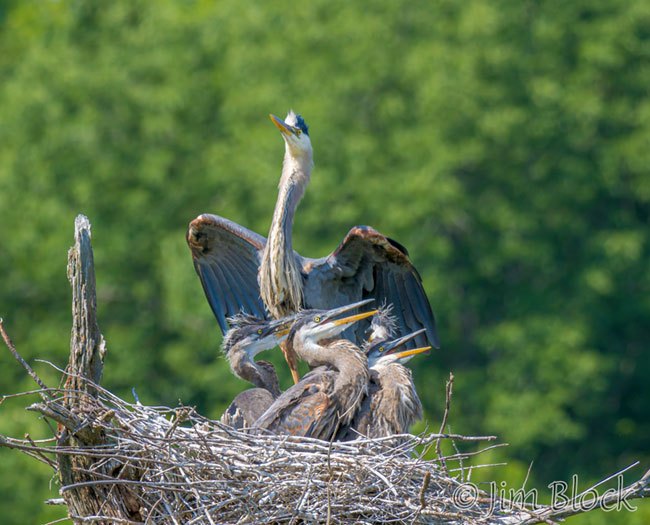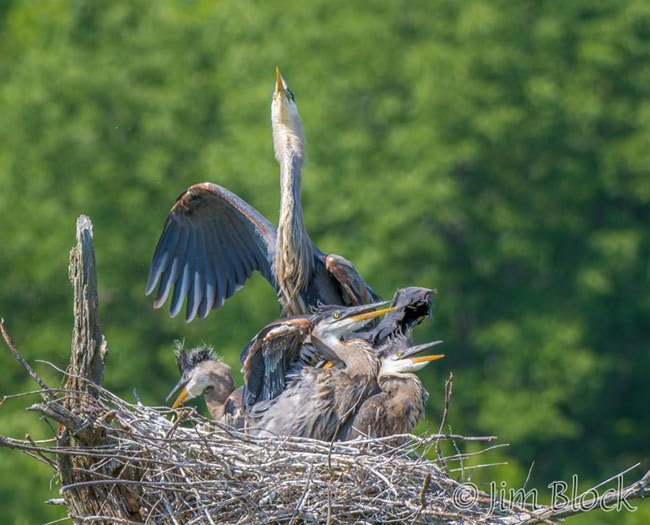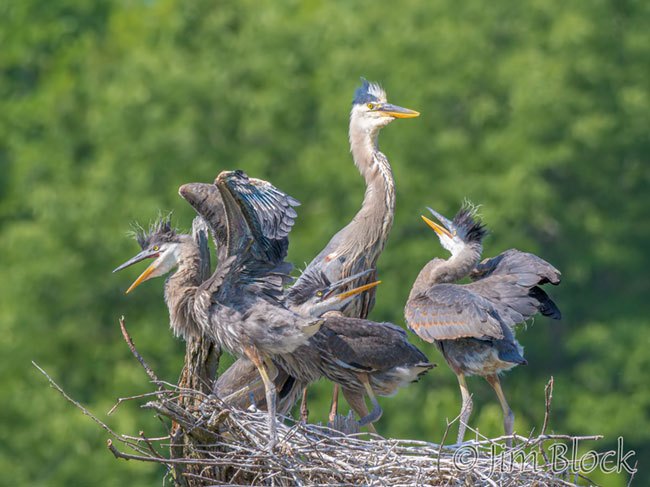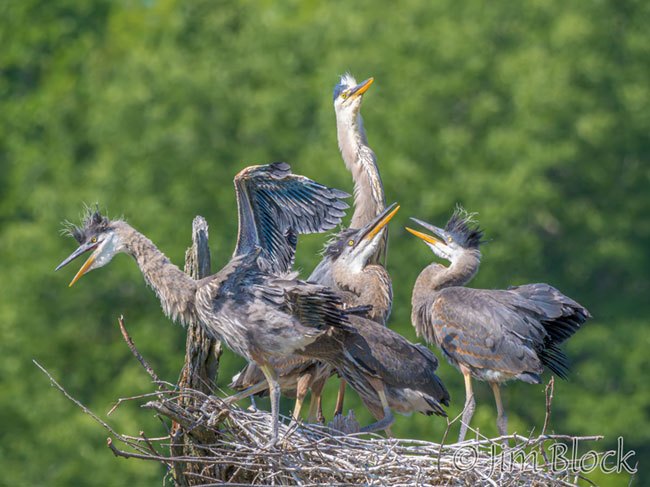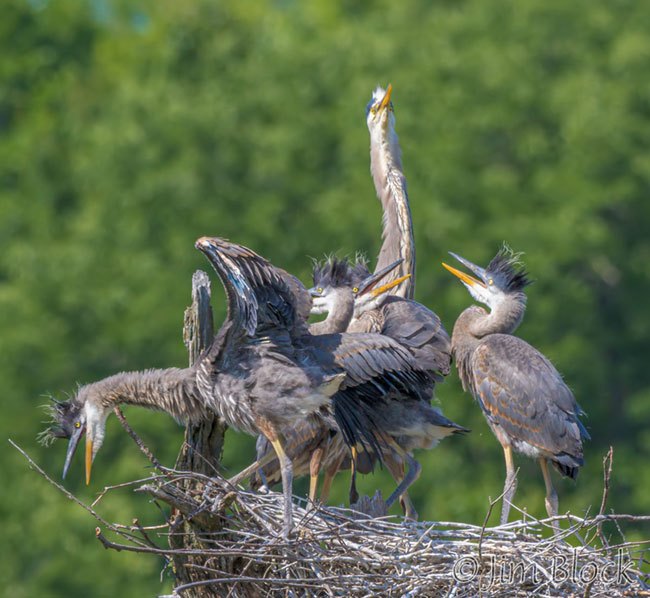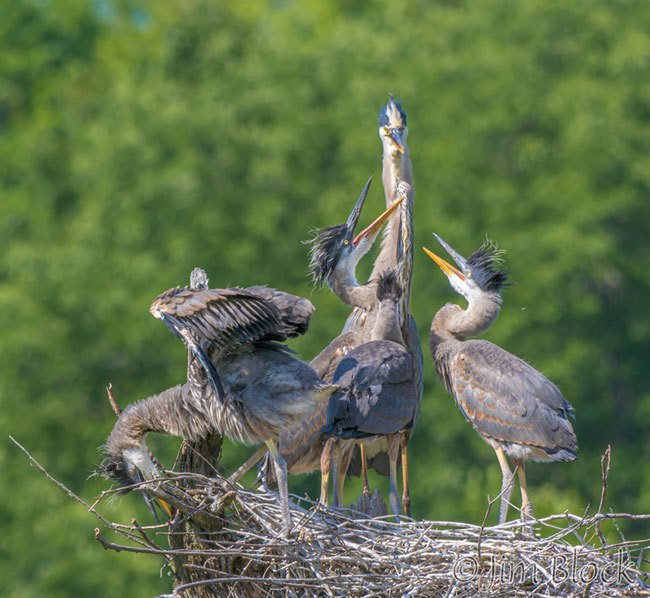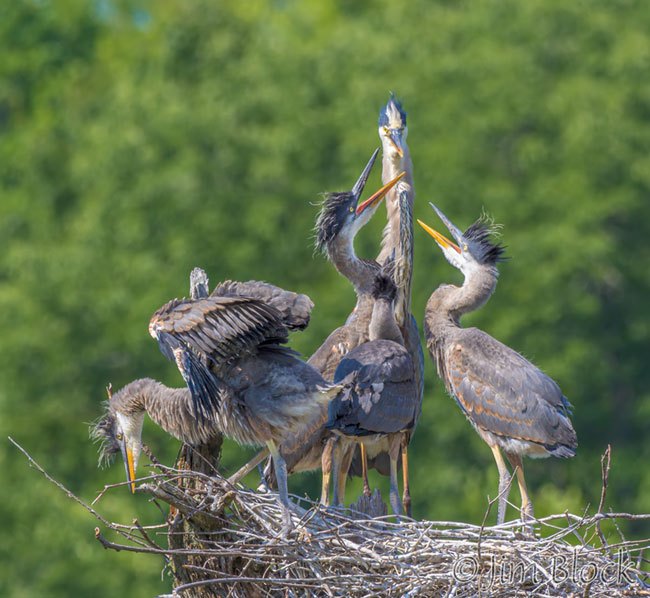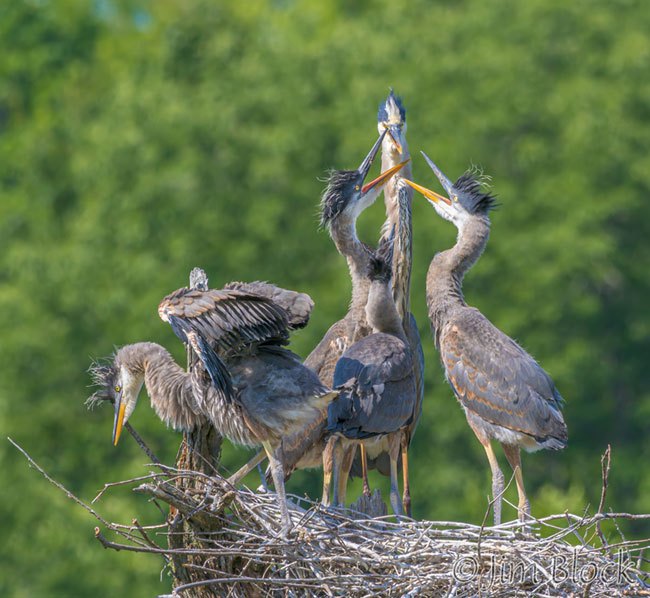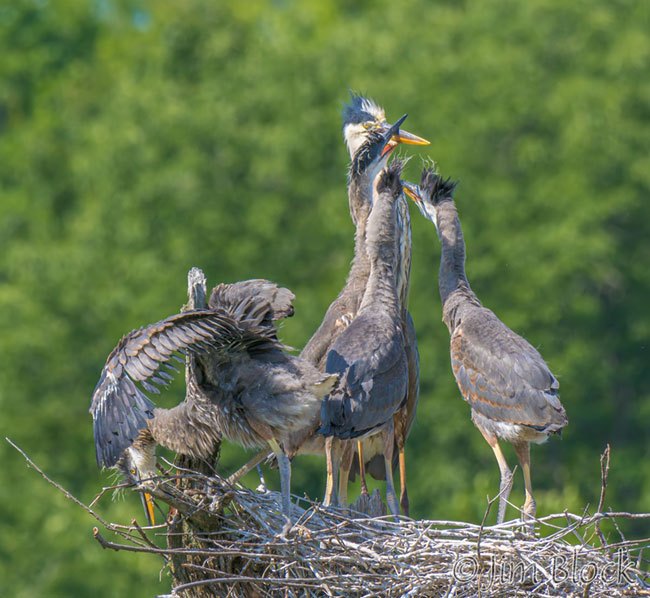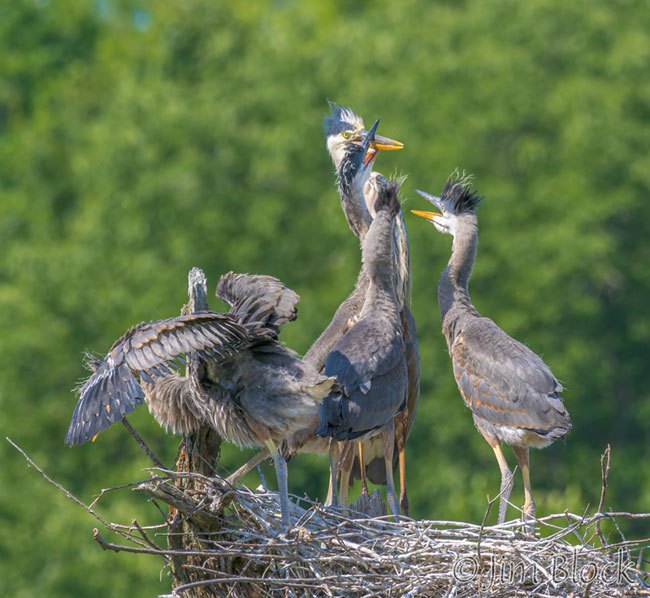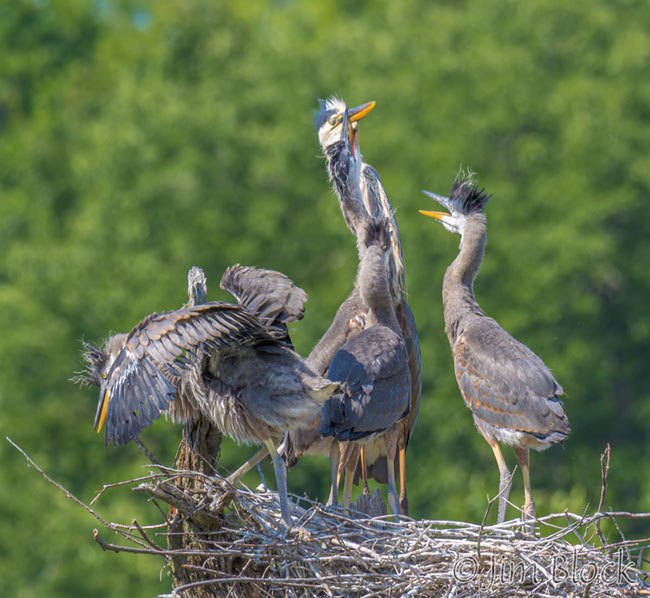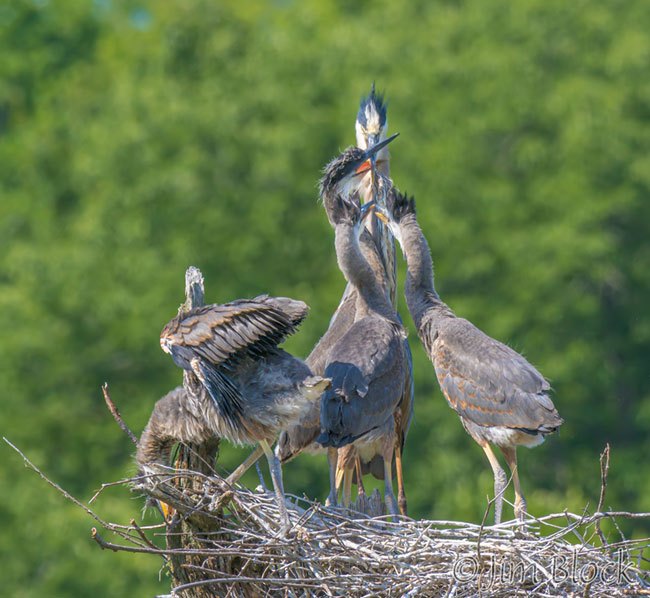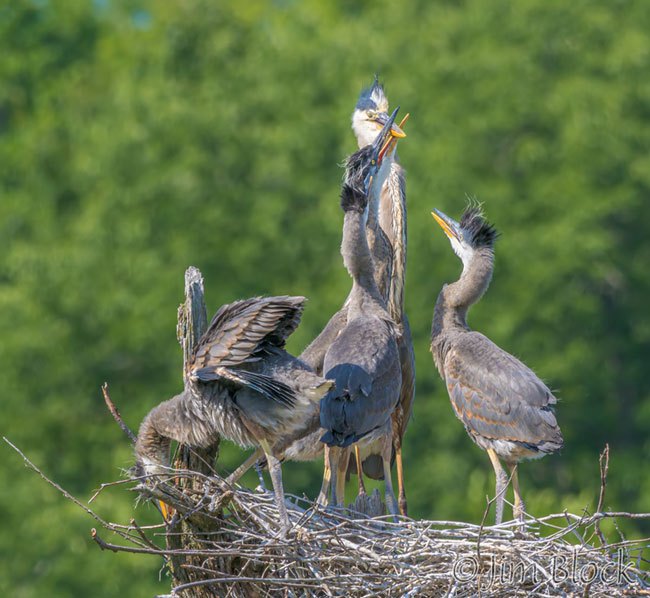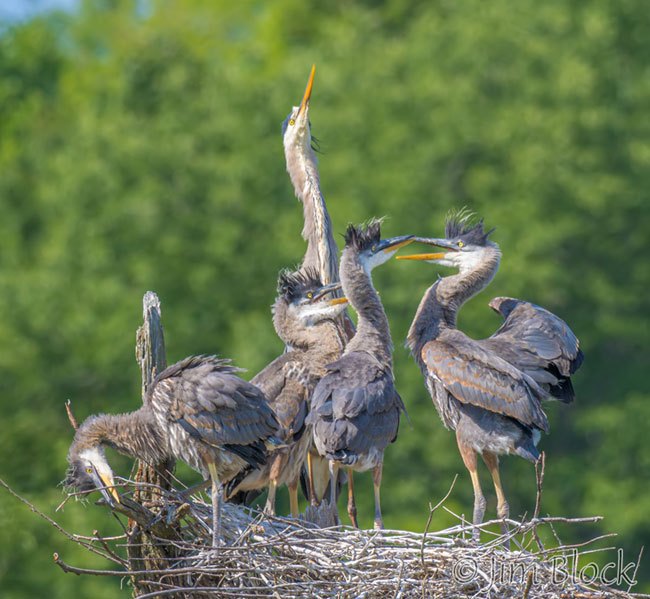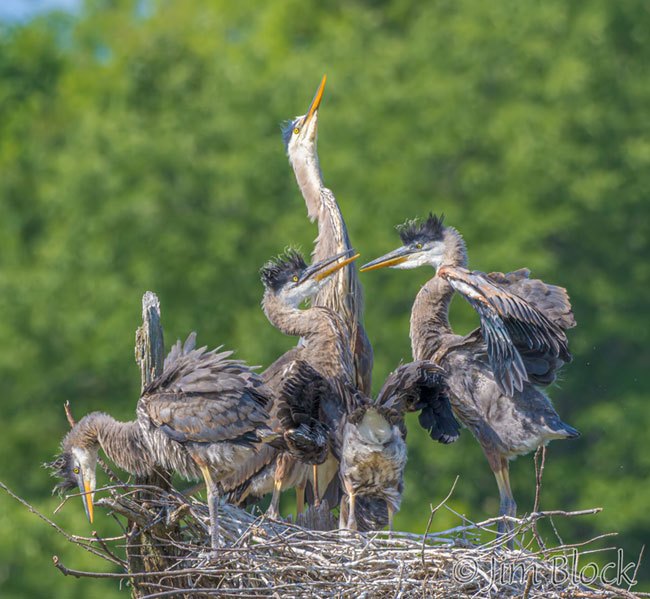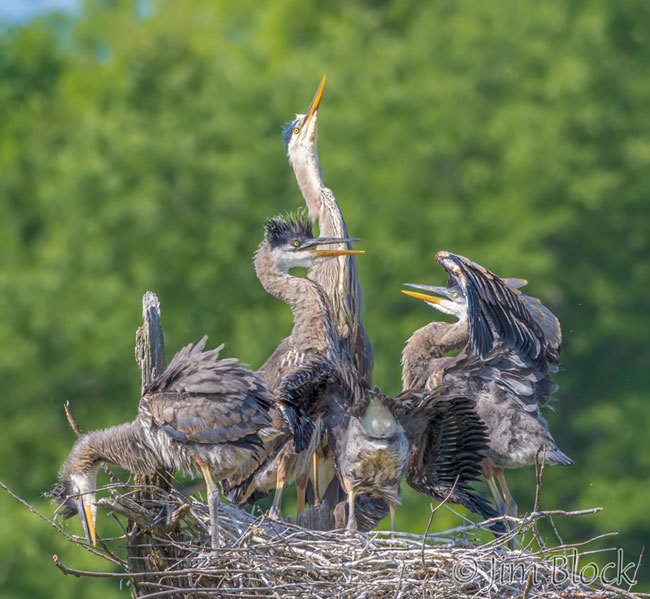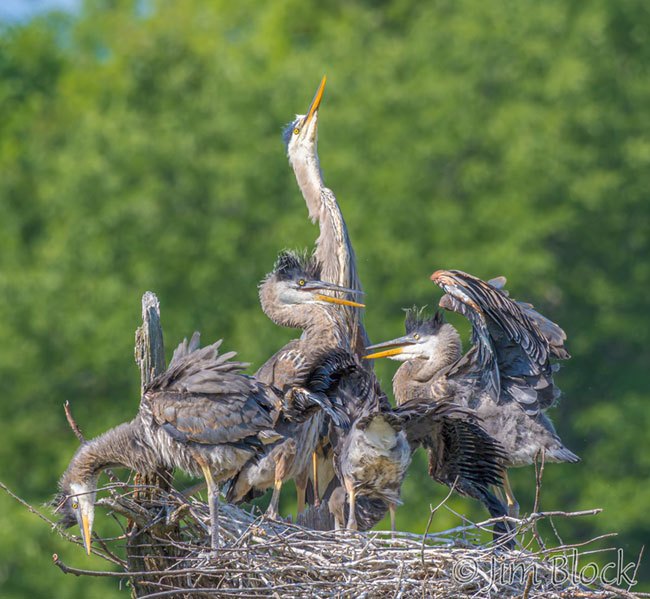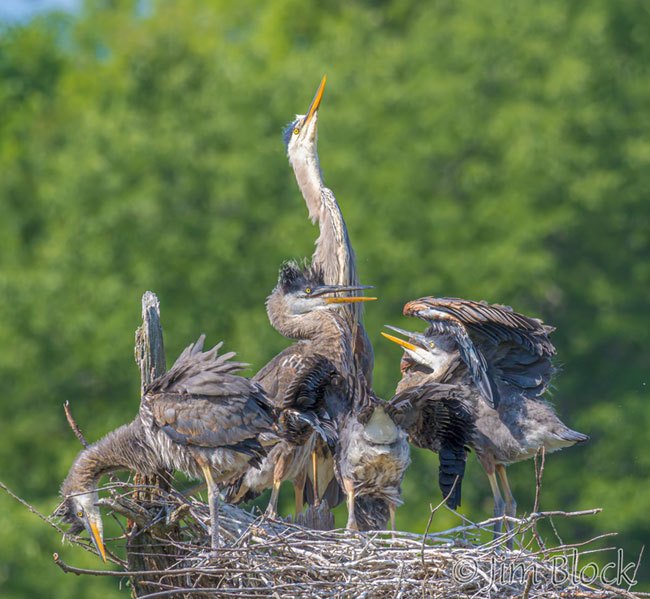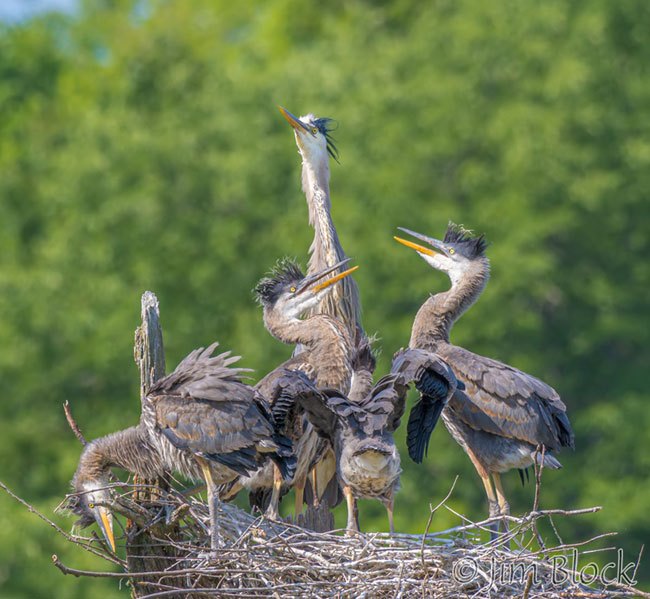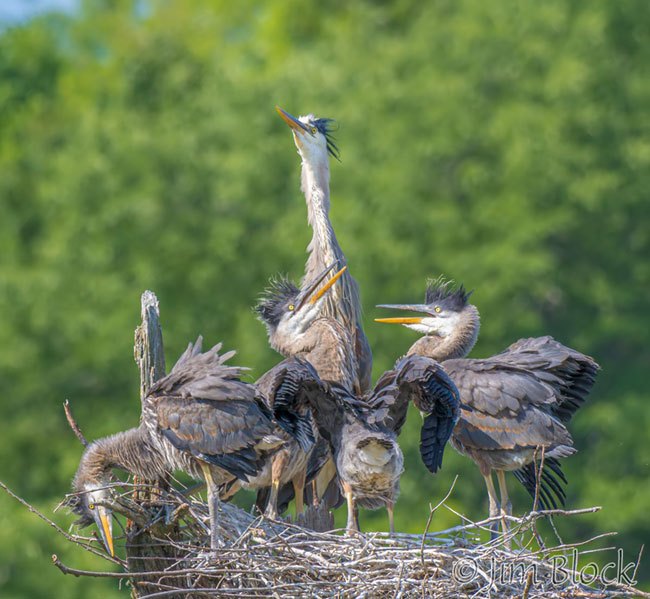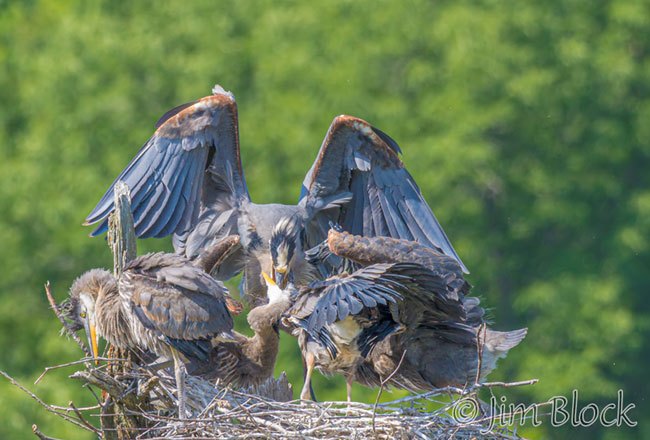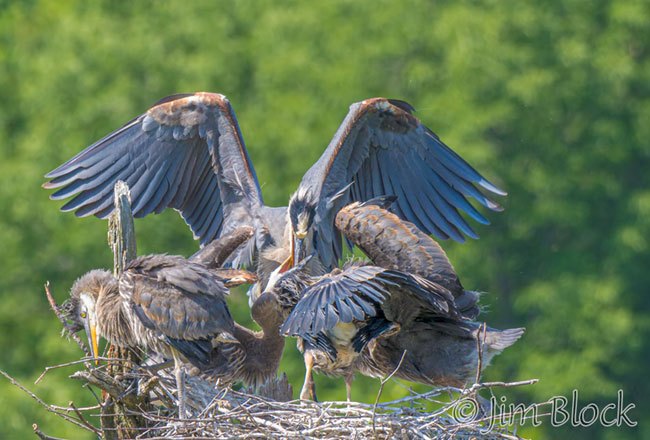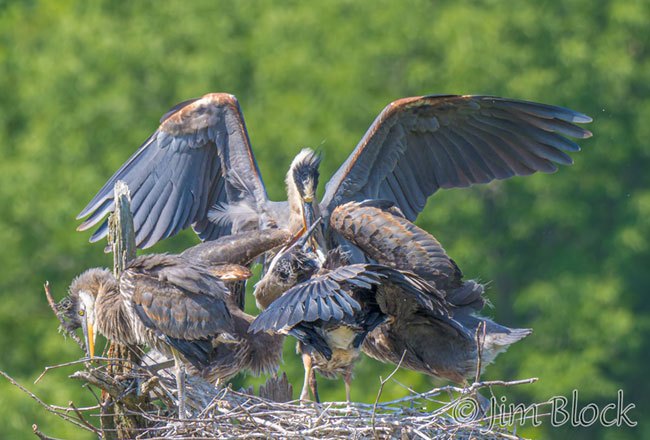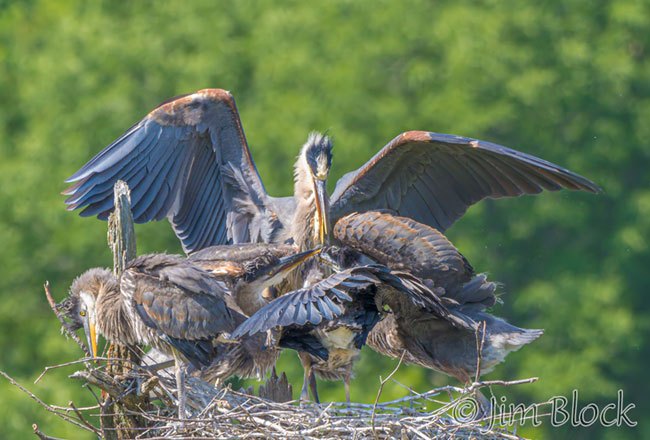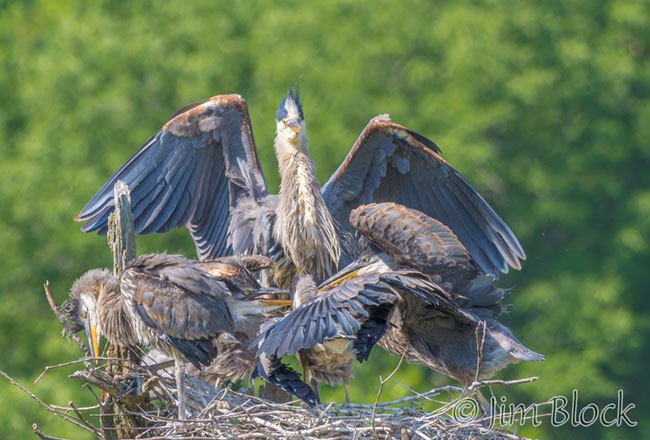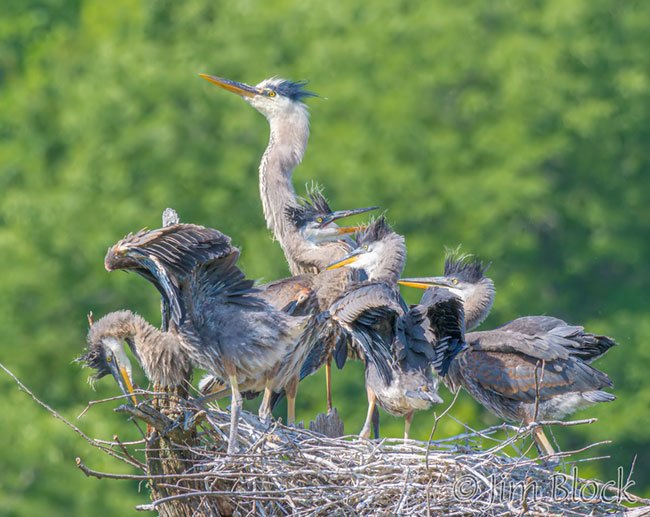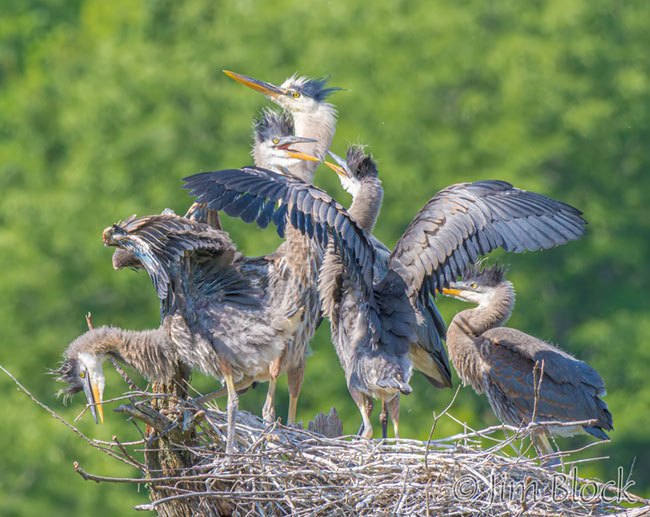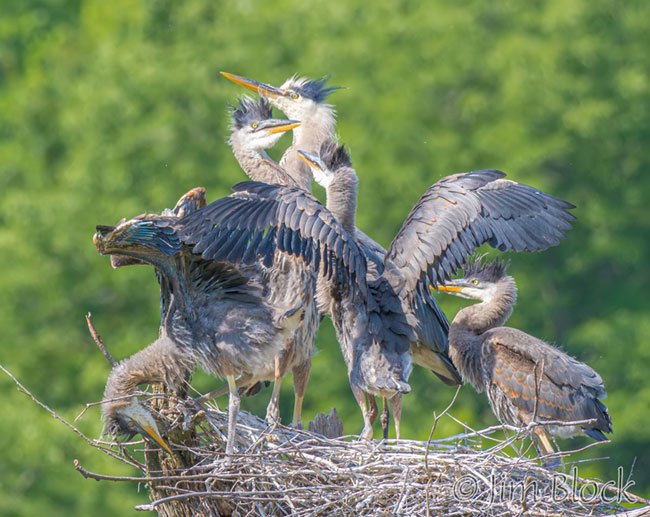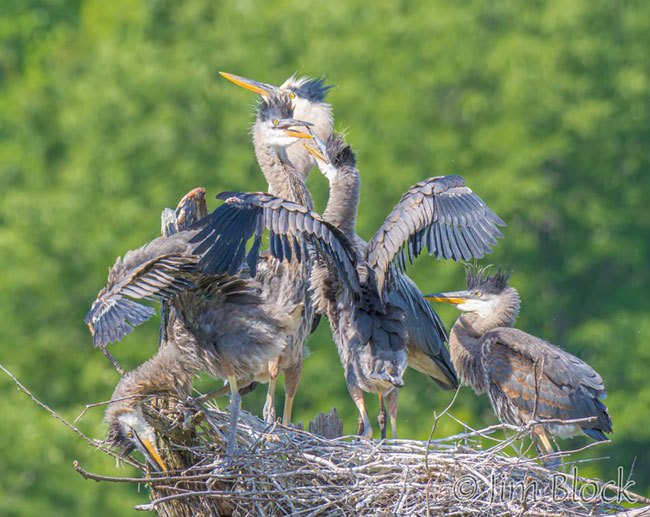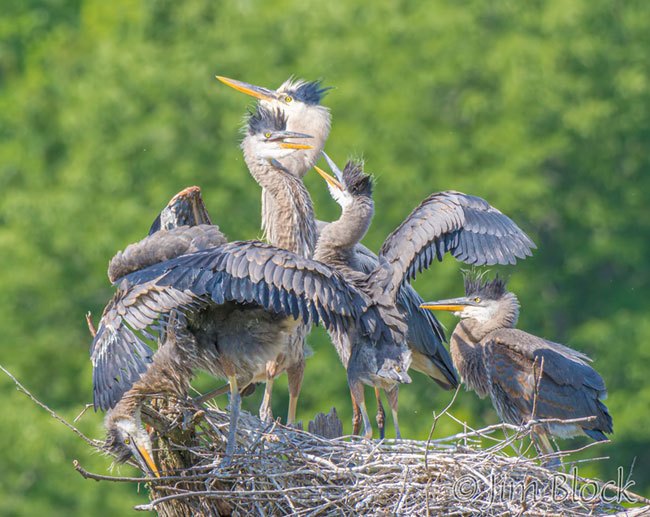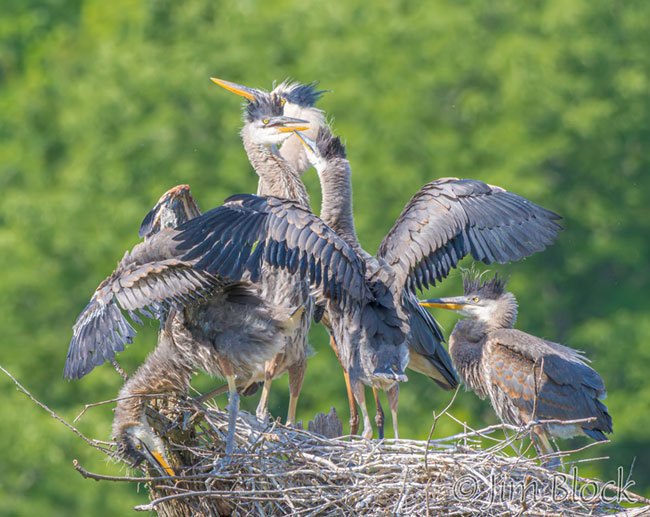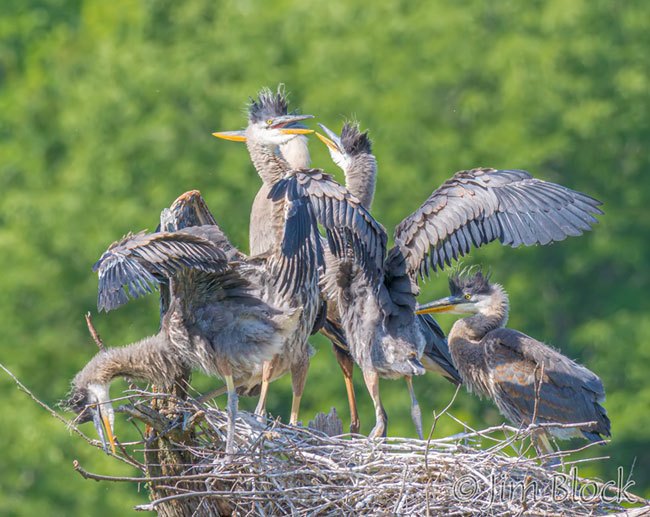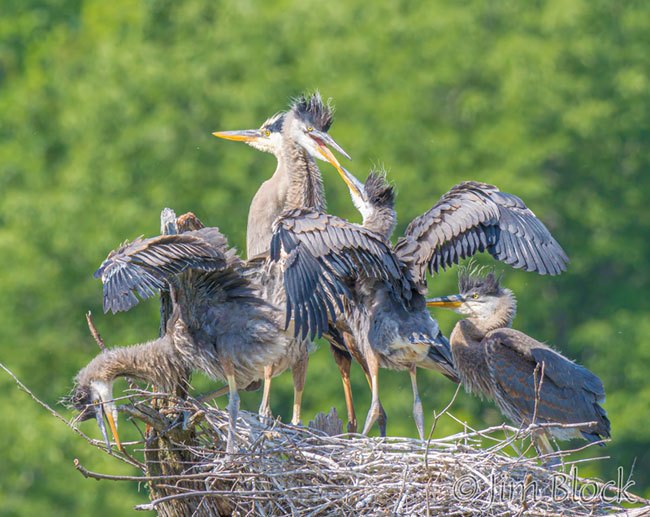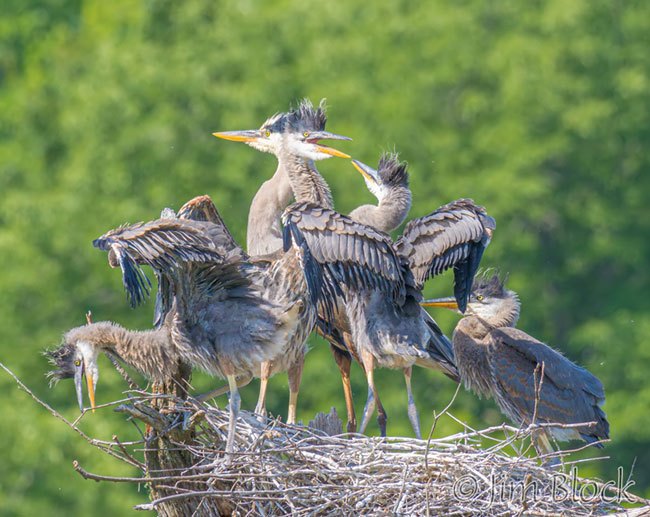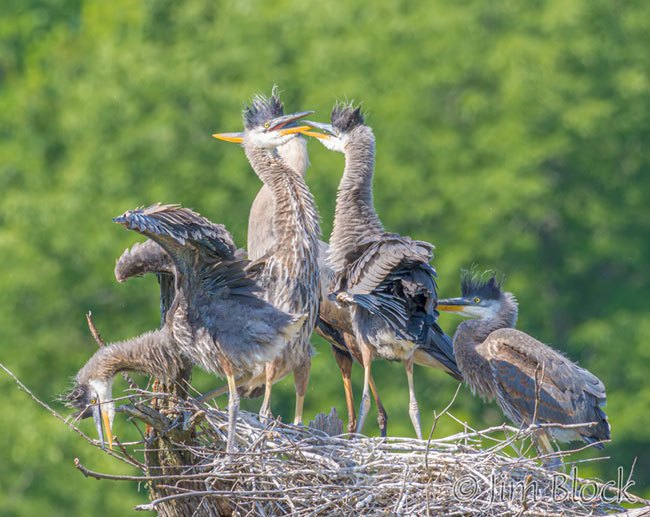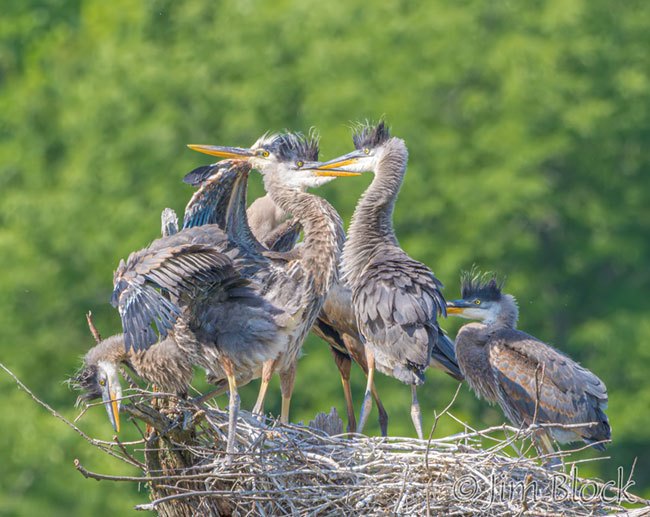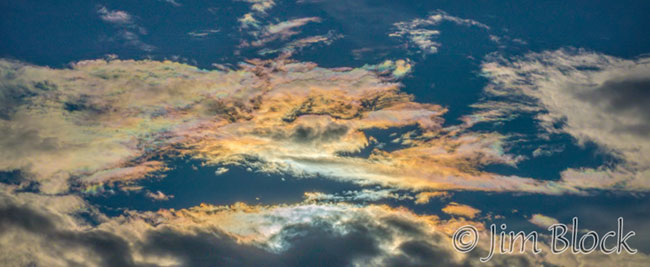In the last three weeks I made three trips to photograph Great Blue Herons on a nest in Springfield, NH. I learned that these birds grow fast.
The very early light was golden on June 17.
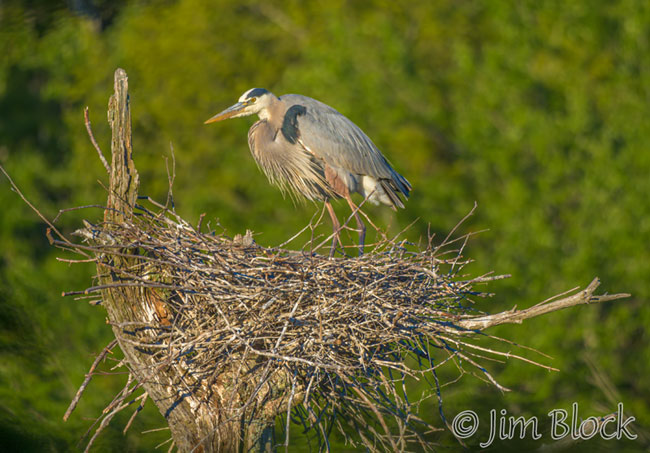
Somewhat later, I got a portrait of a parent standing on a nest. No chicks in sight.
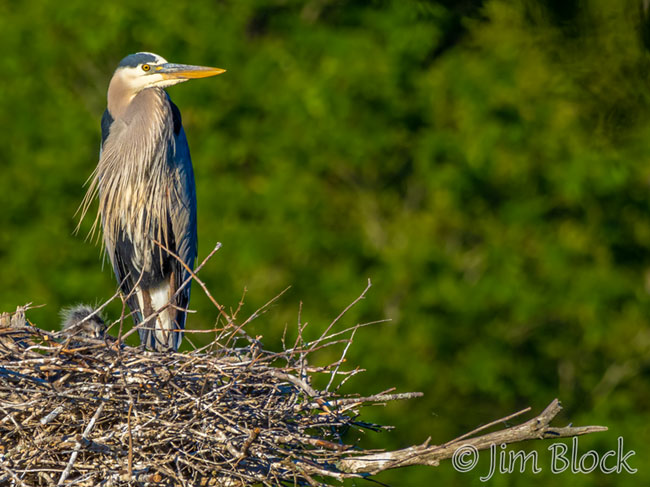
Finally after 40 minutes, a chick appeared, barely peeking over the nest.
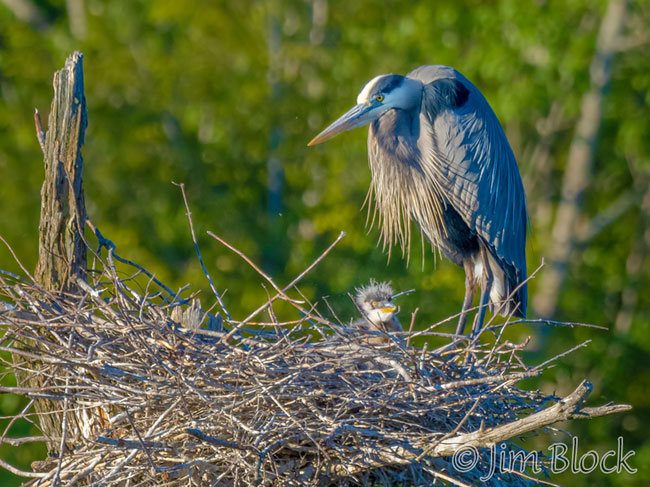
This trip needed to be short because I needed to meet a few folks early that morning. But I did get a chance to scope out the nest.
My second visit started at 5:45 AM in dark and gloomy light. Since I was shooting handheld with a long lens during all my visits, the low light made photography challenging. Still, I was pleased with the results and very happy to discover four rapidly growing chicks.
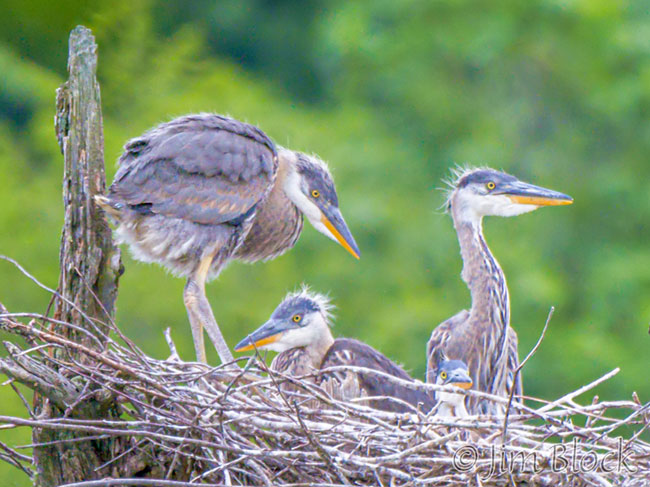
Well, at least three of them were rapidly growing.
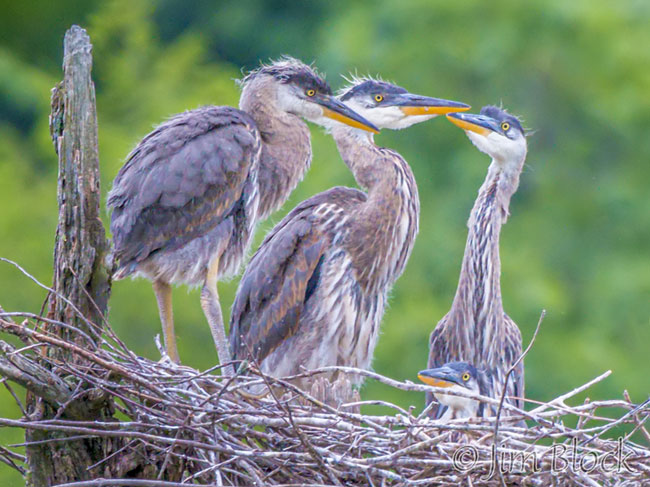
There are four chick in each photo in the show below, but one is somewhat hidden behind the bird on the left. And the smallest one is barely peeking over the nest.
Here is a view where you can clearly see all four chicks.
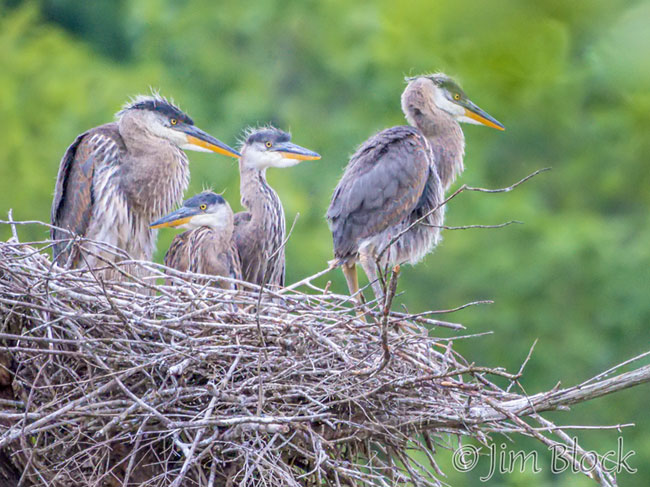
Here are a few more photos I took on the 4th of July.
I stayed for over two hours, but no adult arrived while I was watching the nest. I did notice that one of the chicks was noticeably smaller than the other three.
I was not able to arrive before 9:30 AM on July 7, but that was fine. The light was bright, though a bit contrasty.
On the previous trips I had tried three vantage points. Two gave me a clear shot of the nest, but were a bit farther away than the third. On my July 7 visit I spent the whole time from the third spot. This spot was slightly lower than the other two, and hence I was shooting a bit up at the nest. I also had to shoot through a small window of branches and leaves. But this spot was it was slightly closer to the nest, and the light was closer to front light, which I generally favor for birds.
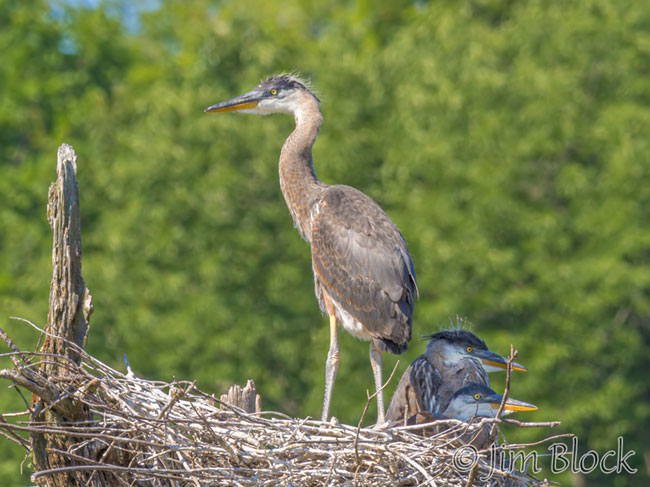
For the first 15 minutes I only saw three chicks. I feared that the “runt” might have been lost. This does happen, especially when hungry chicks compete for food. But then a fourth chick appeared and all was well.
Soon, a parent arrived. You can see how the chicks watched it arrive.
The chicks got noticeably excited, but the parent did not feed them immediately. I believe that the adult needed to “call up” the meal first. You can see the adult stretching its neck to do so.
Finally, breakfast time. But one chick refused to eat and instead kept looking at something below the nest.
A reader of this blog wrote to tell me about her observations at a Great Blue Heron rookery for several seasons: “…the fourth baby was often harassed unmercifully, especially at feeding time. The poor youngster would hang his head over the edge of the nest to avoid being pecked in the head during the melee for food.”
After the first helping, there was a bit of a squabble.
In the photo below you can see the scramble for the second helping. Except for the one that was boycotting breakfast.
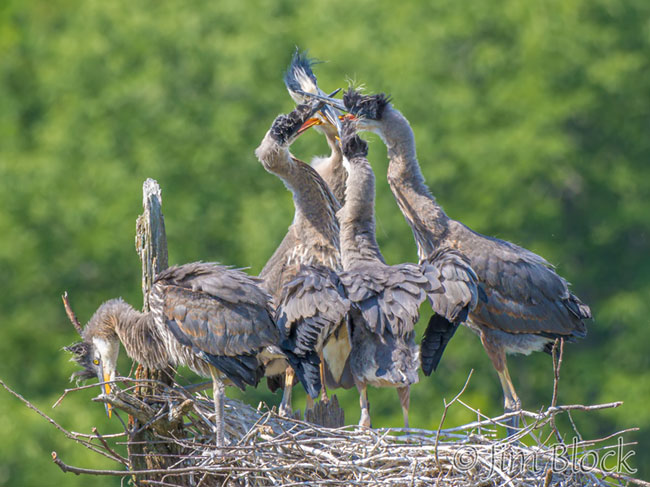
The second helping seemed like a disorganized mess.
The breakfast ended with a fight with the adult avoiding acting as a referee.
The parent left, and shortly thereafter I did too. I had a very busy day planned.

